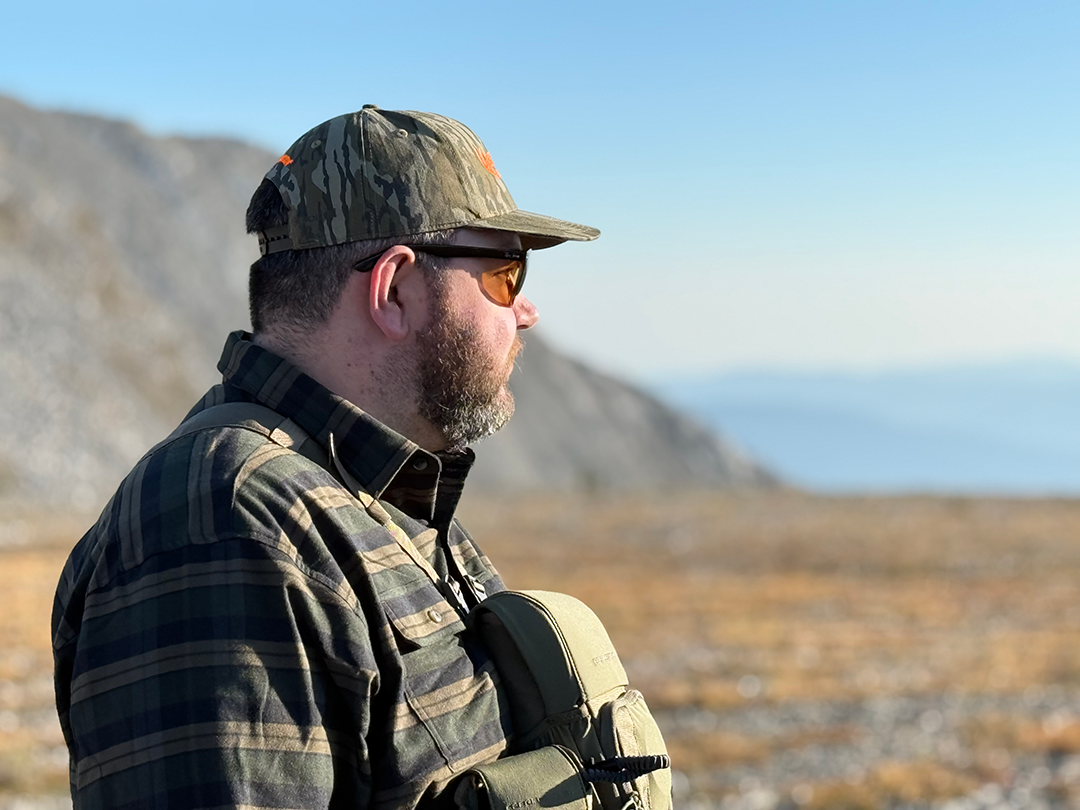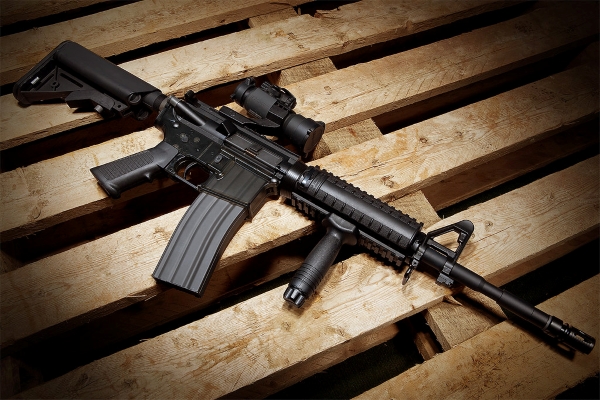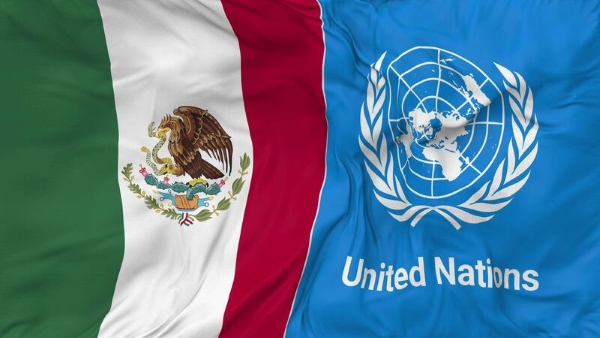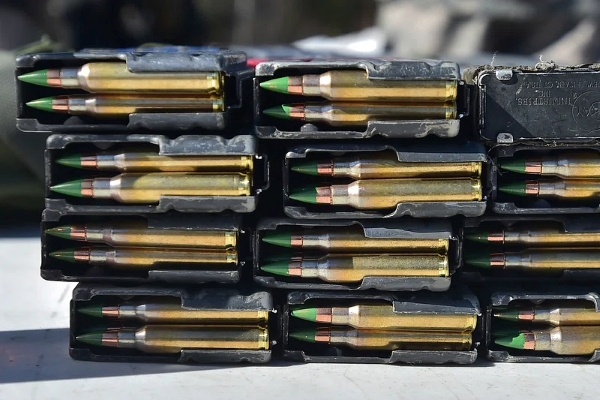I didn’t go to Canada looking for a postcard (though it was one of the most beautiful places I have ever seen, even after living in Colorado for nearly eight years). I went there to look behind the curtain and get a first-hand account of what is actually happening with Mark Carney’s gun control regime, more specifically, Canada’s Gun Confiscation scheme.
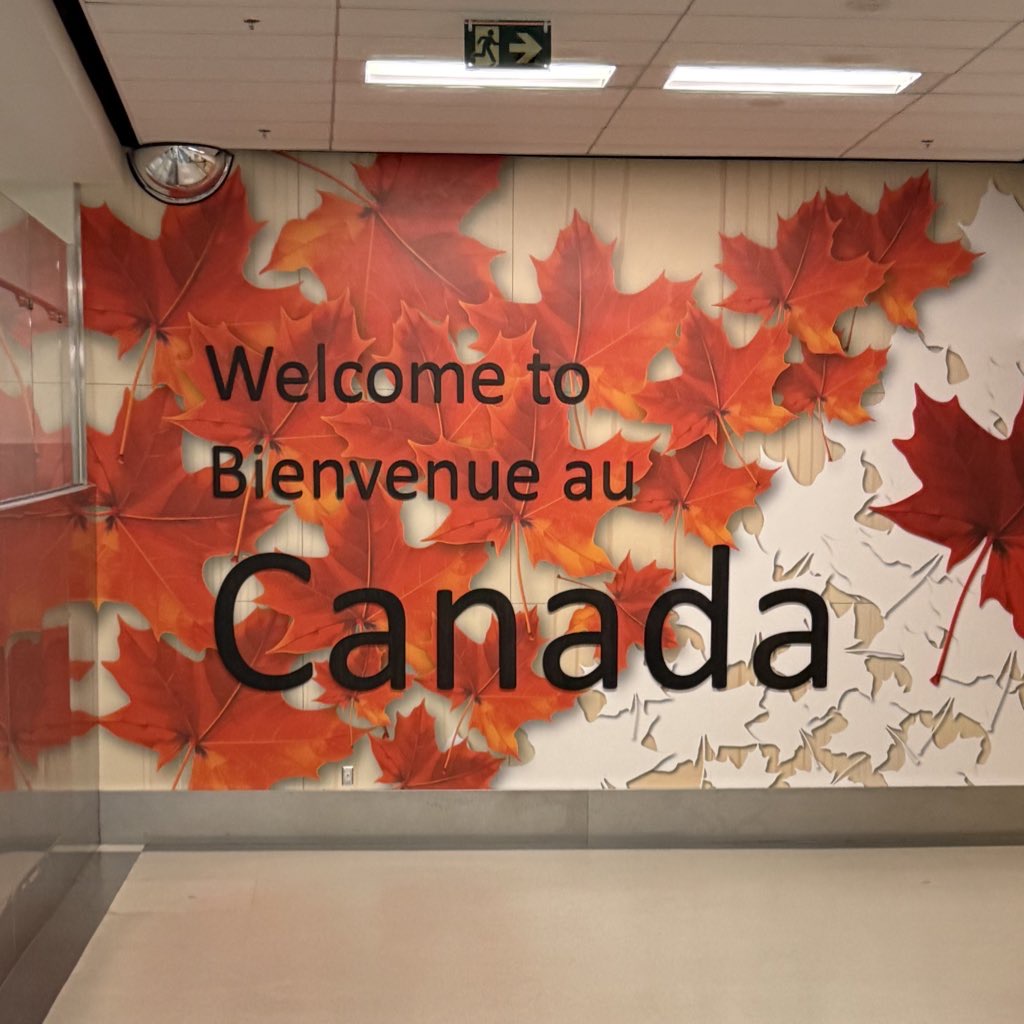
A helicopter dropped us on the shoulder of a mountain outside Nordegg, Alberta – thin air, cold wind, endless spruce and limestone. With me was Rod Giltaca, CEO of the Canadian Coalition for Firearm Rights (CCFR). Ronnie Adkins, NAGR’s Industry Relations Director and host of American Marksman on Pepperbox, had pulled the strings to get me on that ridgeline in the first place. And because the universe has a sense of drama, Rob Furlong—yes, that Rob Furlong, one of the best long-range rifle shooters on the planet and head of Rob Furlong’s Marksmanship Academy—was there to teach and to spot. We shot bolt guns off rock benches, read wind like a second language, and slept under a crowded stairlight sky when the sun rested behind the Canadian Rockies.
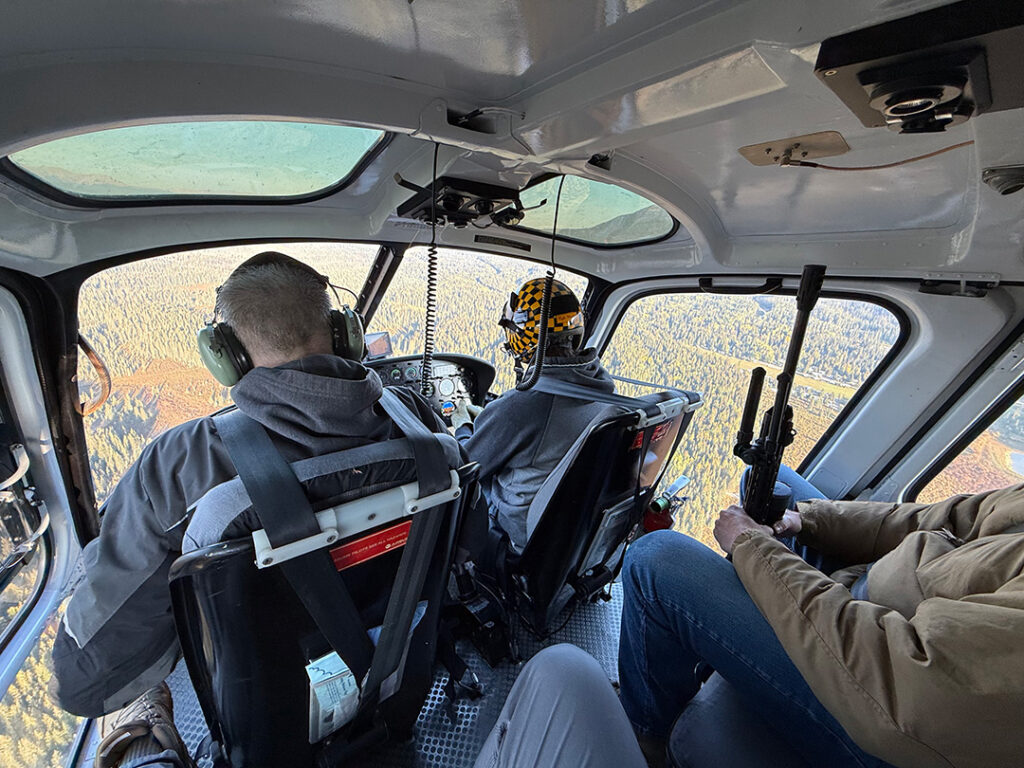
It was one of those trips where the “cool factor” writes itself. But that wasn’t why I went.
I was there to get a first-hand account of what is actually happening to firearm freedoms in Canada—without press releases, without spin—so that gun owners in the United States could see clearly how fast a “free people” can find themselves managed, licensed, and finally disarmed via literal confiscation “for their own good.”
What I learned on that mountain and in the conversations around a tiny camp stove and a scratched-up Pelican case should worry every American who cares about the Second Amendment. This is how I saw it.
A country that can do “whatever it wants”
Rod didn’t waste time getting to the point. Canada, he explained, operates under the Westminster parliamentary system. That setup gives the ruling party in Ottawa enormous latitude once they’ve secured power. And here’s what really surprised me as an American: they don’t even need a true majority to govern. With a minority government, the Liberals can simply cut deals (often to fund cities in which they hold power) with smaller parties, cobble together enough votes, and – BAM – a new law is on the books.
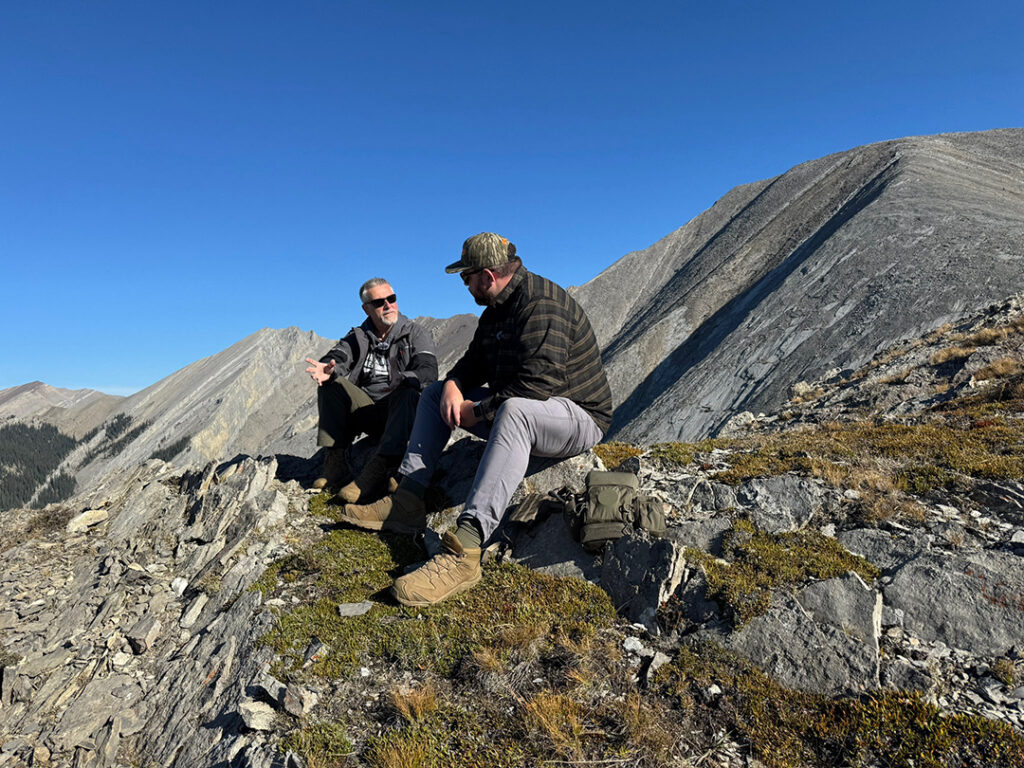
It gets worse. If the political winds shift, the sitting government can dissolve Parliament and call an election whenever it suits them. No four-year clock, no fixed date. Just a snap election with barely any notice to the public. In practice, that means the people running Canada spend most of their time watching polls and waiting for the moment when it’s politically convenient to strike.
Sure, we have plenty of political gamesmanship in the United States, but imagine if Democrats (or Republicans, for that matter) could halt everything mid-session, call an election on their terms, and scoop up just enough seats to ram through their agenda in Congress. That’s not just dysfunctional. It’s madness.
Even worse, there is no codified right to keep and bear arms. Property rights aren’t entrenched the way Americans assume they must be. And when courts are deferential and the bureaucracy is activist, there isn’t much of a brake pedal.
You can debate the philosophy all day, but the practical reality is blunt: the Canadian federal government decided to prohibit broad swaths of commonly owned firearms, and then it did.
It built the machinery to track, “compensate,” and ultimately remove guns from private hands. It doesn’t look like the raids Hollywood imagines, at least not at first.
Firearm freedom will fall to the likes of web portals, amnesty windows, eligibility lists, and “first-come, first-served” compensation that won’t cover the market value of basically any weapon the people of Canada own. It looks like a permanent cloud of criminal liability for the people who don’t comply.
Rod, via CCFR, has poured years and millions into litigation. He’s not a cynic; he’s a fighter. But even he described the system as structurally tilted: “The government can do whatever it wants, to whoever it wants, whenever it wants.” That line stuck with me as much as the wind cutting up the ridge.
From “just a ledger” to confiscation
If you’re an American who hears “registry” and thinks we don’t have that here, I’ve got bad news: we do. Every background check you’ve ever filled out, every 4473 form, is stored at the retail level. That data is not sitting in some void. It’s in binders, boxes, and hard drives in gun shops across the country, all of it traceable back to you and your firearm. And even worse, the ATF has been caught quietly digitizing these records in a grim office building in West Virginia. The reality is that we are far closer to Canada’s model than most gun owners are willing to admit. I don’t say this as a scare tactic. It’s simply the harsh truth about the America we’re living in today.
Now look north. Canada repealed its all-long-gun registry years ago, but the infrastructure crept back in – retail ledgers, model-by-model restrictions, and eventually sweeping prohibitions. Handguns were registered. AR-15s and a ballooning list of “variants” were declared illegal. Retail logs, whether on paper or in point-of-sale systems, created a roadmap that let the government know enough to target categories when it was ready.
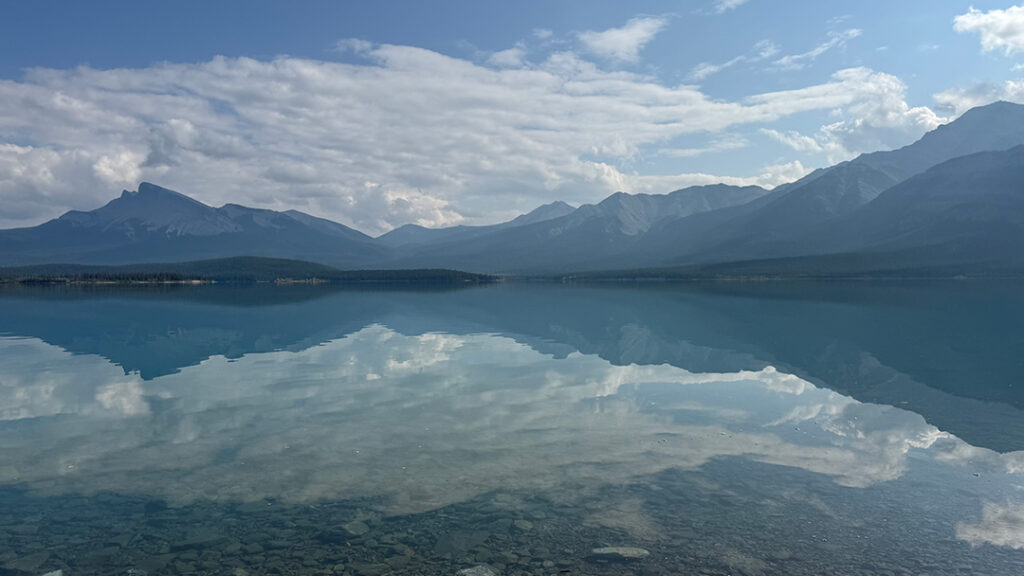
Then came the “compensation” scheme: open a portal, tell owners to declare their firearms, promise they’ll be considered for payout, fund it just enough to scoop up the low-hanging fruit, then close the window. Anyone left is suddenly in unauthorized possession of a prohibited firearm, a felony that can carry years in prison.
That’s incrementalism perfected. Catalog, freeze, prohibit, dangle compensation, then criminalize by attrition. Bureaucracy doesn’t need 100% compliance when it can weaponize time, paperwork, and fear.
Culture shift: from citizens to subjects
The most jarring part of the Canadian story isn’t the rulemaking, it’s the vast cultural shift of the last 15 years. Granted, Canada’s firearms culture is MUCH smaller than that of the United States; however, in places like Alberta, gun owners are very present.
Rod has lived this as a gun owner, trainer, competitor, and civil rights advocate. He remembers a country where government overreach ran into a thick wall of “No.” Now he sees a political class comfortable calling whole categories of their neighbors “dangerous” for owning a tool, and a media culture that treats gun ownership like a dirty secret.
When he started, the old line “registration leads to confiscation” felt like a bumper sticker. Then he watched the slope get steep. Trudeau’s government sold its prohibitions as “safety.” Courts deferred. Major news outlets nodded along. And a lot of Canadians who only own a bolt gun or granddad’s pump shrugged and said, “Well, handguns and ARs were always sketchy anyway.”
That division is strategic. If you can separate “acceptable” hunters from “unacceptable” sport shooters, you can isolate the spear’s tip.
You pass bans that only hit the people who shoot on Saturday and practice reloads. You leave the guy with the .270 alone, at first. He tells himself it’ll never reach him. Then one morning, the “tip of the spear” is gone, and he’s at the front of the line.
Rod uses that “line” metaphor a lot. It works. If a third of the queue disappears in one legislative session, everyone else moves forward, whether they realize it or not.
What confiscation actually feels like
“Door-to-door” makes for dramatic TV and a hell of a movie. The reality in Canada is more surgical and, in some ways, more unsettling. You target public figures and people who make noise. You catch others during routine life events: a house fire, an insurance inspection, a traffic stop that surfaces a serial number. You pick off the unlucky and let the chill of fear do most of the work.
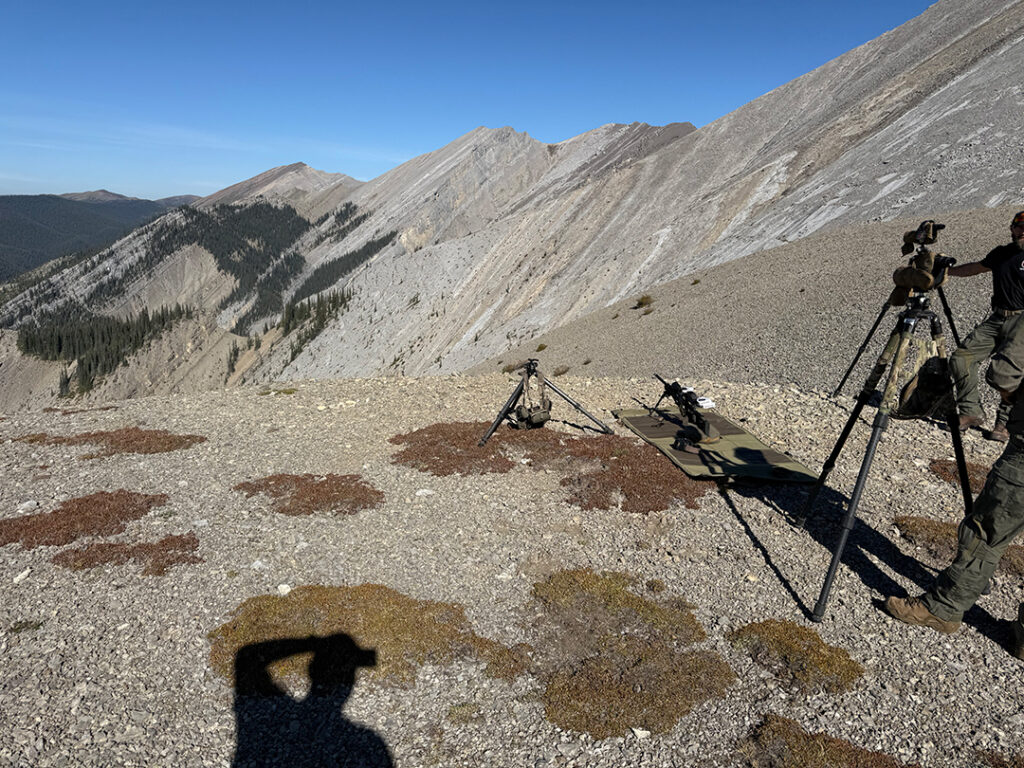
Meanwhile, you make compliance a race: declare early or risk getting nothing; accept pennies on the dollar or accept felony exposure. People love to say, “They’ll never get them all.” That isn’t the game. The game is to permanently criminalize the holdouts and to normalize a world where the state decides what is “acceptable” for you to own—today.
We talked about export options. Some guns can be sold abroad, in theory, but cross-border rules and NFA classifications turn “sell it to an American” into a legal obstacle course. Businesses in Canada can’t pay fair market value for prohibited inventory they can’t sell. In practice, a lot of people are stuck choosing between bad and worse.
The home-field advantage of snap elections
Americans underestimate how much election architecture shapes policy. As I briefly talked about earlier, in Canada the sitting government can call an election when it’s politically advantageous – minority or not. Campaigns can run as short as a few weeks. That gives them a home-field advantage. By the time an opposition campaign scripts and cuts ads, the writ drops, the clock runs, and –BANG – the window closes.
For groups like CCFR, that means you’ve got to be organized before the bell. You don’t wait to find your voice after the snap; you run year-round programs that make voting painful long before an election is called. Rod’s team has done the unglamorous work: TV buys, ground game, constituency mail, wrapped RVs parked outside campaign offices, and the constant drumbeat of “here’s how your MP voted.”
If you think that sounds familiar, it should: it’s a similar confrontational model NAGR runs here in the States. You put lawmakers on record now. You attach real consequences to their decisions now. Then, when the election comes, whenever it comes, you don’t start from zero.
A night under the stars with a hard truth
The cool stuff matters because it puts a face on the stakes. Lying under a cold sky on that mountain, I thought about how the freedom to sleep under the stars, shoot out past a mile, and train with a legend like Rob Furlong is tied to something more profound than “recreation.” It’s about living like a citizen, not a subject. It’s about stewardship over your tools, land, and responsibilities.

Rob’s tips on wind calls and positional shooting were worth the trip by themselves. But the lesson wasn’t just ballistic. It was political: the same precision we teach on the rifle is what we need in our activism – clear targets, correct dope, disciplined follow-through.
What Americans need to hear
I’m going to be painfully blunt.
- Don’t get cocky about the Second Amendment. It is a towering advantage, but it is not a force field. We’ve already seen prosecutors and judges try to “work around” Heller and Bruen. The Canadian path – ledger, freeze, prohibit, compensate, criminalize – can be translated into American bureaucrat-ese. Some states, like California, Colorado, and New York, are already trying.
- Stop thinking of politics as a season. Politics is a calendar you live by, not a holiday you visit. If a lawmaker takes a bad vote in March and you wait until October to get mad, you’ve already lost. The moment a politician hurts you via a record vote, you start building the case to make them feel it—mail, text, digital, earned media, door hangers, the full stack. Don’t wait until the next election. Make them feel the political pain now.
- Organize like an adult. I love the guy who shoots 3,000 rounds a month. Frankly, I am that guy some months. But volume of ammo fired isn’t volume of pressure, nor is it really even helpful to the fight for our Second Amendment freedoms. Join, volunteer, donate money and time, collect names, and get your people trained on how to move votes. Lone wolves burn out. Packs win.
- Refuse the divide-and-conquer trap. I loved it when Rob and I discussed this: If you hunt, fight for the pistol competitor. If you carry, fight for the skeet shooter. The attempt to separate “acceptable” from “unacceptable” gun owners is the oldest trick in the playbook. Don’t fall for it. If you won’t stand for the guy with the AR, don’t act surprised when they come for your lever gun later.
- Learn the language of consequences. Politicians don’t learn from lectures; they learn from losses. Making a bad vote costs them time, money, sleep, and maybe even the seat.
The CCFR playbook—and why it matters
Rod walked me through CCFR’s toolbox. Some of it is familiar: lobbying when it’s available, litigation when it’s necessary. A lot of it is unapologetically confrontational: buying TV time, coordinating call-in and fax-in storms that jam the pipes, and out-organizing the other side in short-fuse snap elections.
CCFR has become one of the largest third-party advertisers in the country on this issue. That didn’t happen by accident; it happened because they realized that in a system tilted toward the sitting government, you have to punch above your weight early, loud, and often.
Are they “winning” right now? Not by the scoreboard. The prohibitions are moving. The portal is coming. Confiscations are months away. But they are still fighting, and they’ve kept a movement alive through a political headwind that would flatten most groups.
“First they came for…” isn’t a cliché here
One of the most powerful moments of our conversation is when Rod shared that he spoke at a donor banquet packed with elite hunters, 600 strong.
These were not casual outdoorsmen; these were men and women who had poured years and fortunes into the pursuit of game in some of the harshest terrain on earth. Many of them only owned bolt-action rifles or lever guns, the kind of firearms most still assume are “safe” from prohibition.
Rod stood at the podium and drew an invisible line. At the very front, he said, are the pistol shooters and the black rifle guys – the AR-15 owners, the competitors, the sport shooters. Behind them, further down the line, are hunters with semi-auto shotguns or .22 rifles. And way at the back, the old man with his single bolt-action deer rifle inherited from his father. That old man looks at the line and shrugs: I’ll never get to the front. I’ll never lose my rifle.
Then Rod looked out at the crowd and delivered the gut punch: “Now imagine a third of that line is already gone. That’s where we are in Canada. And if you think they’ll stop before they get to you, you haven’t been paying attention.”
The room went silent. It hit different because the hunters suddenly realized the line isn’t hypothetical. The bans aren’t theoretical. Semi-automatic rifles are gone. Handguns are gone. Even .22 semi-autos are gone. And the ones left, the bolt guns, the lever guns, the pump shotguns, are now at the front of the line.
That’s not fear-mongering. That’s just the math of incrementalism. Canada’s hunters woke up too late to the reality that once the “problem guns” are swept off the table, the definition of “problem” shifts.
If you’re sitting in Texas or Tennessee and dismissing this as “just Canada,” understand that gun control activists here are playing the same long game.
If they can’t ban a category outright, they’ll strangle you with process, merchant codes to flag your purchases, “safe storage” laws written by people who’ve never locked a safe in their life, “sensitive place” maps that make carry meaningless, local ordinances designed to bait you into unintentional violations.
The slope isn’t always steep; sometimes it’s a treadmill that never turns off.
Rod’s story is a warning: by the time you realize you’re at the front of the line, it’s already too late.
The grief no one counts
We don’t talk enough about the human cost. When a government tells a man he can’t keep his late father’s shotgun, or a woman that her competition rifle is now contraband, it isn’t just “policy.” It’s grief. It’s the sudden knowledge that the tools that taught you discipline and responsibility are now a legal liability hanging over your head. It’s a business owner staring at shelves of inventory that became unsellable overnight, wondering how to pay employees who have nothing left to sell.
Multiply that by hundreds of thousands and you get a cultural wound that won’t show up in the talking points on TV.
It is easy for a minister in Ottawa to stand at a podium and say “buyback.” It is much harder to look into the eyes of a grandfather who wanted to hand his rifle down to his grandson, only to be told that family tradition is now a felony.
Rod told me about gun club presidents who built communities around marksmanship, suddenly forced to cancel matches and shutter ranges because the firearms they were designed around are gone. He talked about small-town retailers and family-run shops that survived generations of economic ups and downs, but are now on the verge of collapse because the core products they carry are illegal.
These aren’t faceless corporations; they’re people with mortgages, employees, and kids in local schools.
The government likes to say “compensation” as if a check can paper over cultural vandalism. But how do you compensate for a life’s worth of trophies on the wall that can never be replicated? How do you write a dollar figure for the hours spent teaching a son or daughter how to shoot safely on the same rifle your father taught you with? How do you replace trust once the government proves it can decide overnight that your property, history, and sport are all illegal?
Rod put it plainly: “For many of us, these aren’t just things – they’re part of who we are. Losing them is like losing a piece of your identity.”
That grief doesn’t make the nightly news.
It doesn’t trend on Twitter. But it festers in the people who know they followed the rules, paid the fees, passed the background checks, and kept their end of the social contract, only to be punished anyway. And it festers in communities where gun clubs close, small businesses fold, and traditions die.
This is the grief no one counts, because it doesn’t fit neatly into a political soundbite. But it’s real.
It’s the cost of incremental tyranny, measured not just in laws and fines, but in trust betrayed and lives disrupted. And once that trust is broken, it’s nearly impossible to rebuild.
What we’re going to do about it
At the National Association for Gun Rights, we don’t sit back and hope the courts or the politicians suddenly find their spine. We fight where it matters most, in the political arena, during the moments when votes are cast and when elections are won or lost. Our model is simple but brutal: hold lawmakers accountable in real time, and make sure the political cost of betraying gun owners is too high for them to risk again.
That means we don’t just keep scorecards; we build movements. When a lawmaker casts an anti-gun vote, our members know about it immediately. Their phone lines light up, their inboxes overflow, their district mailboxes fill with postcards from angry constituents. And when that same lawmaker goes home to campaign, we are right there, reminding every voter of what they did. We marry the legislative season to the election season. A bad vote isn’t forgotten in three months; it is the first chapter of the campaign to take that politician down.
This is how NAGR helped pass Constitutional Carry in state after state – by putting politicians on record, applying pressure early, and carrying that fight through every election cycle until we won. It’s how we are leading the charge in the courts, filing lawsuits that go right at the heart of unconstitutional bans and restrictions. And it’s how we will keep Washington, D.C., in check when the ATF tries to digitize gun records, or when anti-gun legislators attempt to sneak registration schemes into “commonsense reforms.”
If you think Canada’s story can’t happen here, think again. The federal government already has a de facto registry sitting in dealer record books and ATF databases. They are already digitizing records in a concrete bunker in West Virginia. We are not far behind Canada – unless gun owners step up and fight with everything we have.
The difference is that in America, we have the Second Amendment, and we have an organization willing to use political pain to defend it. NAGR exists to be that firewall. But we can’t do it alone. Every gun owner who shrugs off the fight, every hunter who says “they’ll never come for my rifle,” every competitor who assumes “someone else will fight this,” is pushing us closer to the day when we will look like Canada.
Now is the time. Not next year, not after the next election. Right now. Because the other side is patient, and they are methodical. They will chip away until there’s nothing left unless we stop them. NAGR’s confrontational model is the only proven strategy that works – because it doesn’t beg, it doesn’t compromise, and it doesn’t forgive betrayal. We take votes, and then we take scalps (politically speaking). That’s how we save America from sliding down the same slope Canada has already fallen off.
If you value your rights, don’t sit on the sidelines. Stand with us, fight with us, and make sure the politicians in your state and Washington know that betrayal will cost them their seat. That is how we win, and it’s the only way to keep the Second Amendment from becoming a distant memory.
Final shots from the mountain
At first light, we broke camp under the cold sky, and Furlong moved us out with precision, escorting each of us to the chopper as it lifted off the peak.
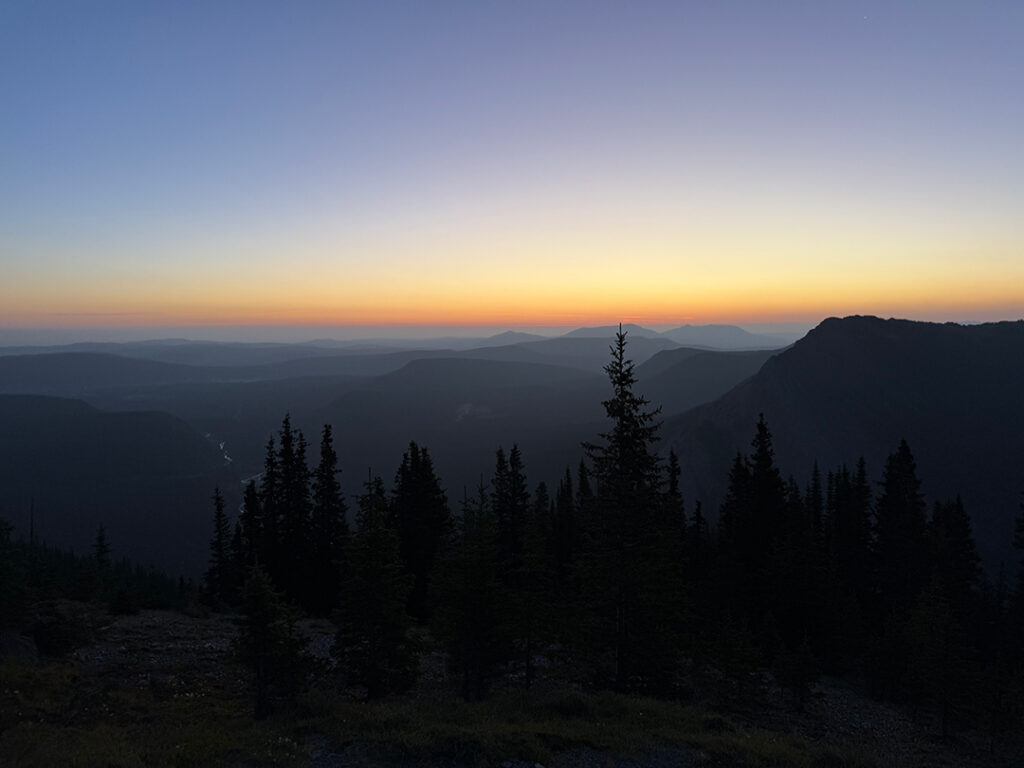
Canada had already given me its lesson by then. What I saw on that mountain wasn’t just a stunning view; it was a glimpse of the end of the road we warn about in every communication we put out. It isn’t hypothetical.
America, take note while there’s still time. Fight every inch, resist every ordinance, push back on every “commonsense” regulation designed to make you ask permission to exercise a right. Stay united, refuse to be split into “good” and “bad” gun owners, and never forget that our rights don’t come from government; they come from God, and they are our duty to protect them for the generations to come.
Watch the full interview below:
About the Author
Taylor Rhodes is the Director of Communications at the National Association for Gun Rights. A seasoned political strategist and unapologetic defender of the Second Amendment, Taylor has led high-impact campaigns at both the state and national levels. He lives in Hoover, Alabama, with his wife, Madison, and enjoys bourbon, golf, and collecting firearms—especially his 12.5” Geissele Super Duty.

